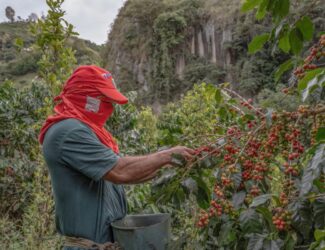
Coffee Prices Hit 47-Year Highs as Global Exports Surge
The International Coffee Organization (ICO) has released its latest Coffee Market Report for August 2024, revealing significant developments in coffee prices and exports. For the second consecutive month, Robusta prices have reached a 47-year high, a notable trend driven by constrained supply and ongoing geopolitical challenges.
Green Coffee Prices Surge
In August 2024, the ICO Composite Indicator Price (I-CIP) averaged 238.92 US cents/lb, reflecting a 1.0% increase from July and a staggering 54.6% rise year-on-year. The continued upward pressure on prices has been attributed to tight global supply chains and heightened demand.
All major coffee types saw price increases:
- Colombian Milds rose by 2.3% to 263.76 US cents/lb.
- Other Milds increased by 1.7% to 261.44 US cents/lb.
- Brazilian Naturals edged up by 1.0% to 242.19 US cents/lb.
- Robustas remained stable at 214.68 US cents/lb, maintaining their elevated levels.
The report highlights that tight supply conditions, combined with geopolitical tensions, continue to disrupt shipping logistics, pushing prices higher. Shipping routes have been diverted due to Middle East instability, further complicating supply chain operations.
Global Exports Increase
Coffee exports showed robust growth, with total green coffee exports reaching 10.03 million bags in July 2024, a 9.6% increase compared to July 2023. The coffee year-to-date total for 2023/24 has now reached 103.08 million bags, up 10.6% from the previous year.
Key growth drivers in exports were:
- Colombian Milds surged by 17.7%, reaching 1.05 million bags, with Colombia leading the way.
- Brazilian Naturals increased by 18.0%, thanks to strong contributions from Brazil and Ethiopia, recovering from logistical challenges earlier in the year.
- Robustas saw modest growth of 3.3%, with gains in Uganda and Brazil offsetting a sharp decline in Vietnam, the world’s largest Robusta exporter.
Regional Export Trends
The report highlighted diverse regional trends:
- Asia & Oceania experienced an 8.1% decline in exports due to tight supplies in Vietnam, awaiting the next harvest. However, Indonesia’s exports grew by 57.3%, partly balancing the region’s overall downturn.
- Africa emerged as a strong performer, with exports rising by 34.7%, driven by significant growth in Ethiopia and Uganda. Ethiopia’s exports jumped by 63.6%, while Uganda’s were up 27.2%, boosted by a larger Robusta crop.
- South America saw a substantial 26.0% increase in exports, with Brazil contributing to this surge with its 26.2% growth in shipments.
Soluble Coffee Leads Growth in Forms of Coffee
Soluble coffee exports saw the most dramatic rise, increasing by 38.8% in July 2024, reaching 1.2 million bags compared to 0.86 million bags the previous year. Brazil continued to dominate as the largest exporter of soluble coffee. Additionally, roasted bean exports were up 13.0%, totaling 60,651 bags.
Supply and Demand Outlook
Looking ahead, the ICO report forecasts global coffee production for the 2023/24 coffee year at 178.0 million bags, a 5.8% increase from the previous year. Arabica production is expected to rise by 8.8%, while Robusta production will see a more modest 2.1% increase.
On the demand side, global coffee consumption is projected to grow by 2.2%, reaching 177.0 million bags. This reflects continued strong demand in both exporting and importing countries, particularly in regions such as Asia & Oceania and North America, where consumption is expected to rise by 2.7% and 3.8%, respectively.
Market Dynamics and Future Outlook
The ICO report also touches on broader economic factors influencing the coffee market. Rising interest rates have constrained stockholding, making large-scale purchases financially unfeasible. However, recent signals from central bankers, particularly at the Jackson Hole symposium, suggest a potential shift toward lower interest rates. This could alleviate financing constraints and reduce reliance on just-in-time buying, potentially softening price pressures in the near future.
Certified coffee stocks saw modest increases, with Robusta stocks in London growing by 2.3%, reaching 1.01 million bags, and Arabica stocks in New York rising by 4.5% to 0.91 million bags.
Conclusion
The August 2024 Coffee Market Report presents a dynamic picture of the global coffee industry, with prices continuing to rise due to supply chain disruptions and strong demand. While some regions, such as Africa and South America, have seen robust export growth, others, like Asia & Oceania, face challenges, particularly Vietnam.
As the coffee industry navigates these evolving conditions, potential monetary policy shifts and improved logistics could offer relief to a market currently under strain from elevated prices and supply limitations.
This report underscores the complexity and volatility of the coffee market, with geopolitical factors, economic policies, and supply-demand balances all playing pivotal roles in shaping the future of global coffee trade.



